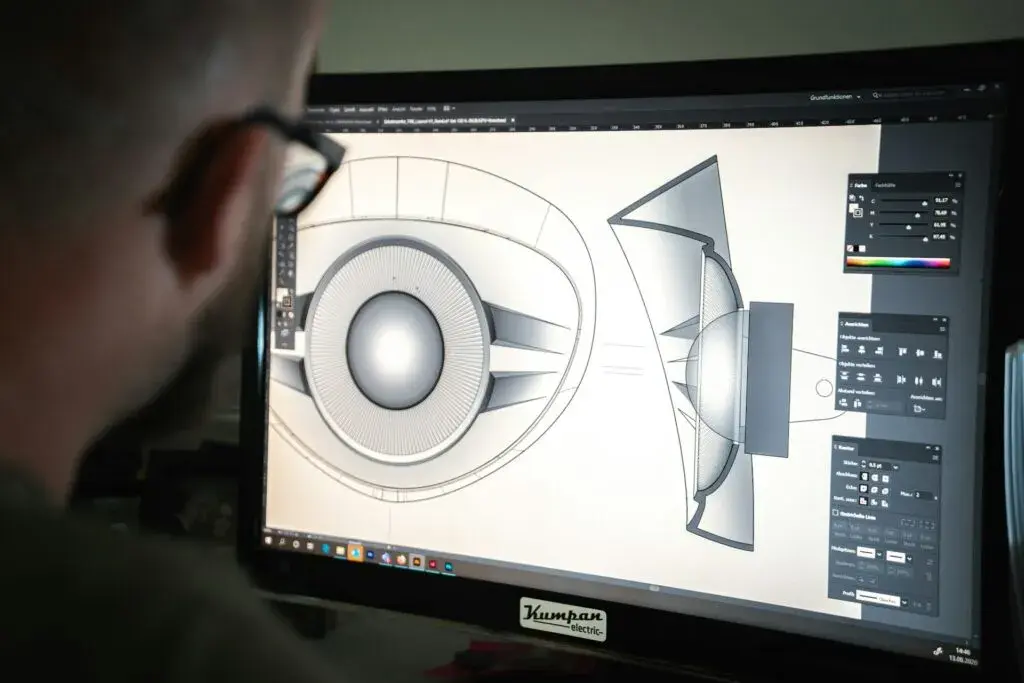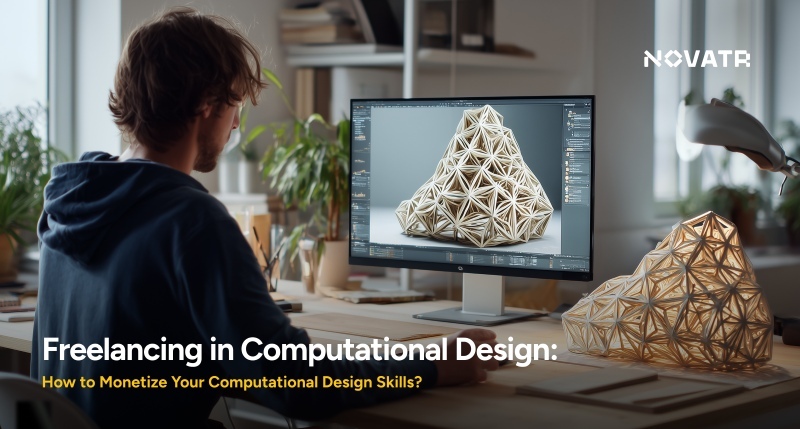
Industrial design is not new because it has always been concerned with creating a new future of products, merging creativity, usability, and innovation. It could be anything, consumer electronics, automobile design, furniture Industrial Designer is central in designing the form, functionality, and sensation of the product. Nevertheless, the profession is expected to change dramatically by 2025.
This shift is evident in the fact that the industrial design software market is projected to grow by 63% through cloud-based adoption and 58% through AI-assisted design workflows in 2025. Generative design, in particular, is opening new opportunities in computational design, BIM automation, and advanced fabrication methods. One striking example is Airbus’s achievement of a 45% weight reduction in its cabin partition using generative design, which improved fuel efficiency without compromising structural strength.
As these changes accelerate, the role of Industrial Designers is set to expand, paving the way for deeper integration of technology, sustainability, and creativity in the years ahead.
The Evolving Role of Industrial Designers
Conventionally, industrial designers would use sketches, prototypes and CAD models to bring ideas to life. It was mostly a linear process that involved conception, refinement and passing on to engineers. Although this type of workflow produced numerous iconic products, it cannot keep up with 2025 and its requirements, which are as follows:
- In competitive businesses, a quicker time-to-market is required.
- Practices that reduce waste and materials used most efficiently.
- Mass customization with consumers having expectations of products to meet their unique needs.
- Inter-disciplinary teams, mixing and integrating design, engineering, manufacturing, and business.
The generative design can enable industrial designers to achieve these expectations. Rather than modelling an individual design by hand, they parameterize, set objectives, and constraints in software. The system subsequently produces hundreds of improved compromised solutions. This is a time-saving process and the advantages of generative design, like light structures, improved material utilization and novel geometries that a person may not have conceived.
When using Industrial Designer software such as Rhino, Grasshopper, and Fusion 360, professionals can evolve beyond simply making forms and shapes into problem solvers and expand creativity instead of replacing it with algorithms and data.
Why Industrial Designers Need To Learn Generative Design?

Generative design is not a tool of the future any more; aerospace, automotive, and consumer products are all areas where it is in use. Its benefits, as far as Industrial Designers are concerned, are not in doubt:
- Faster Ideation: come up with hundreds of ideas in hours rather than weeks.
- Performance Optimization: Optimise the designs to meet mechanical, ergonomic and cost standards.
- Lightweighting & Sustainability: Achieve lightweighting and sustainability, considering the strength and carbon footprint.
- Cost Efficiency: Conserve funds in the production as well as the supply chain.
- Expanded Creativity: Explore unconventional solutions beyond personal biases.
- Career Development: Develop a professional portfolio of future-focused skills that advance to a future earning an Industrial Designer salaries.
Essential Generative Design Skills to Master
To remain relevant in this growing field of industrial design, it is important to enhance some of the essential skills in the core generative design. The skills add value to the designer in streamlining and creating novelty in the production of the products. The following are the fundamental skills an industrial designer must pay attention to:
1. Software Skills

Industrial designers must become adept at using some of the primary software and tools to take advantage of generative design and innovation. The essential skills to pay attention to are noted below:
- Rhino + Grasshopper: whereas learn Grasshopper 3D brings its parametric and algorithmic modeling capability. A combination of them enables designers to investigate advanced geometries and dynamic models. To newcomers, several professionals first learn Rhino 3D as a basic curation to build upon and upgrade into computation and generative design.
- Autodesk Fusion 360 (Generative Design Module): Fusion 360 integrates design, simulation, and manufacturing, making it the best software for generative design workflows. Its generative design feature helps optimize structures for strength, cost, and sustainability.
- Python Scripting: Learning Python scripting will enable designers to automate processes, design custom sequences and integrate several programs that can extend generative design beyond the fixed modules.
- BIM Automation Tools: More widely recognised in the architecture industry, BIM process automation are more applicable to product design workflows, particularly those in cross-disciplinary realms.
2. Soft Skills

The soft skills allow the industrial designers to work in a collaborative and iterative culture, besides the technical ones. The important soft skills in the generative design are given below:
- Algorithmic Thinking: The capability to orient design problems using parameters and results instead of one fixed concept.
- Iteration Comfort: Accepting that the optimum solution is achieved by seeing all the hundreds of design results.
- Data Analysis: Horizons, performance simulations, cost breakdowns, and sustainability metrics will be evaluated.
- Creative Adaptability: Machine Outputs combined with branding and a human-centred design approach.
- Collaboration: The ability to smoothly interact with engineers, manufacturers, and sustainability professionals affected by the computational outputs.
In addition to the technical skills, such skills as facade optimization (applicable in the product and architectural domains) demonstrate how designers may combine form, functionality, and efficiency using parametric techniques.
Where to Learn Generative Design?
While free tutorials are helpful for beginners, true mastery requires structured learning. Still, it is the structured learning, including projects in the industry and mentoring by professionals, that can lead to breakthrough achievement. Novatr offers this advantage provides the designer the option to proceed with a possible transition to a generative workflow.
Key USPs:
- Comprehensive Curriculum: Learn Rhino, Grasshopper, Fusion 360, Python scripting, and BIM automation tools.
- Project-Based Learning: Project-based learning will involve the reception of assignments on real-life design problems and a portfolio construction depicting the workable outcomes of the generative design approaches.
- Expert Mentorship: Under the same people who use the tools in the industry, get advice on how to develop into a professional computational designer.
- Global Recognition: Earn a Generative Design certificate and enhance your job opportunities in the world.
- Flexibility: Online courses are accessible from any place at any time to allow professionals to study even in the course of their work.
The Novatr Computational Design Course, also known as Master in Computational Design course, enables Industrial Designers to bridge the gap between creativity and technology while exploring alternative career paths for Industrial Designers, including BIM specialists, computational design consultants, and digital fabrication specialists.
Conclusion
Industrial design in 2025 is not sketching anymore, nor is it CAD modeling; it is a process of orchestrating algorithms, data analysis, and driving sustainable innovation. With an embrace of the Generative design skills for Industrial Designer professionals, the field is becoming an amalgamation of human creativity with an optimizing machine capability.
By gaining skills in Rhino, Grasshopper, Fusion 360, Python scripting and BIM automation, individuals willing to upskill as an Industrial Designers will be able to stay competitive and have a broadened career development perspective. Training can help increase an Industrial Designer salary package, permitting entry into alternative career paths, and future-proofing in an AI-enabled industry.
Generative design is not a choice anymore, but the new norm to be the market leader in 2025 and beyond by Industrial Designers. Considering those looking to leap, review our Master in Computational Design course by Novatr and look at our resource page to start your journey to being a leader in computational design.
Was this content helpful to you



.jpg)



